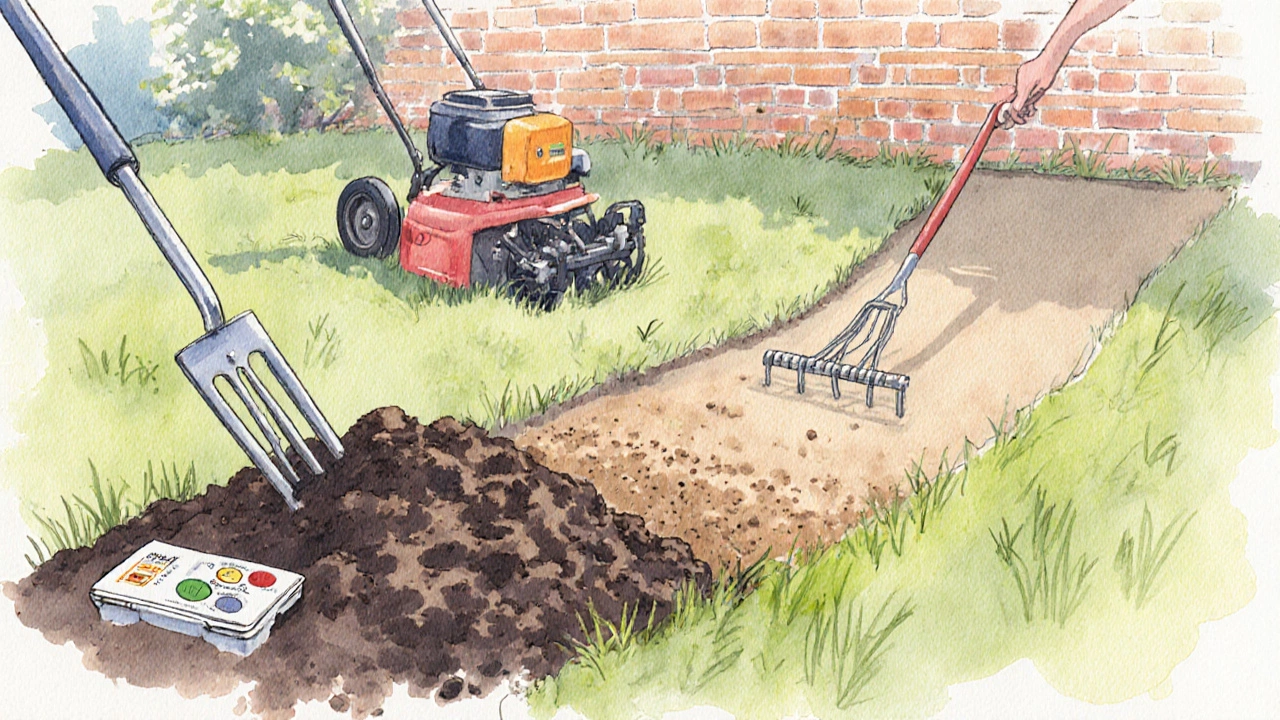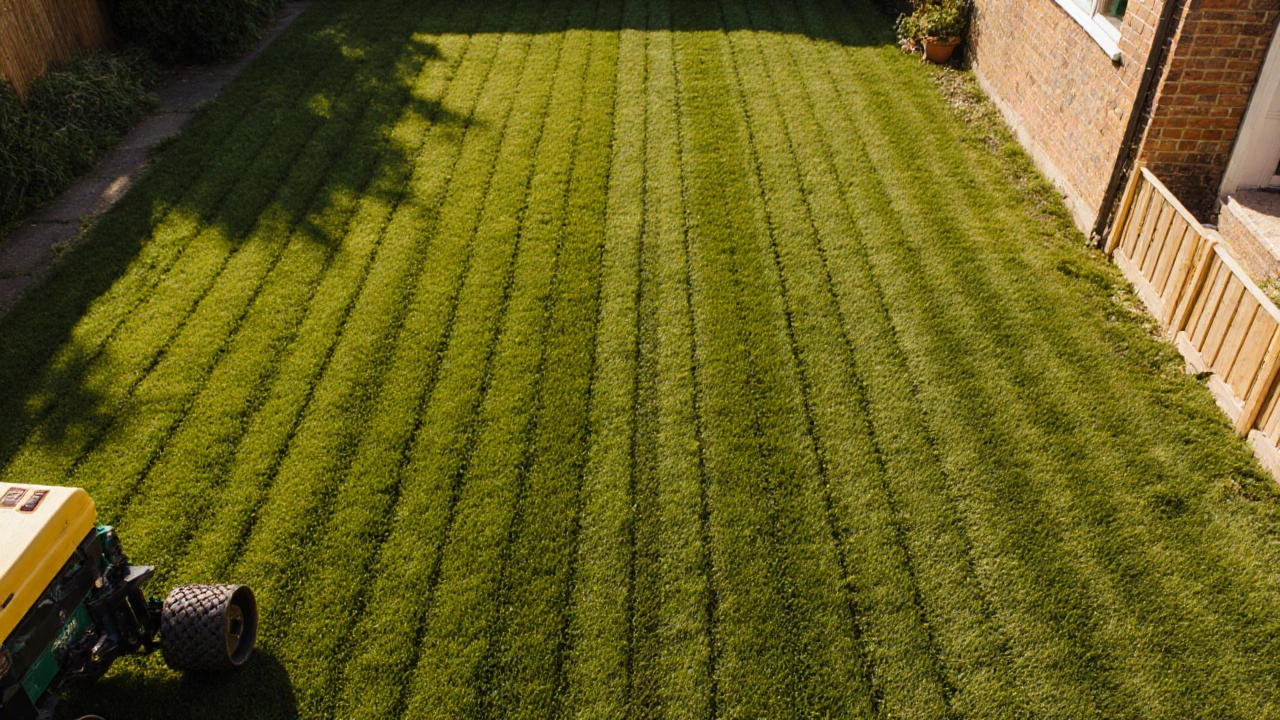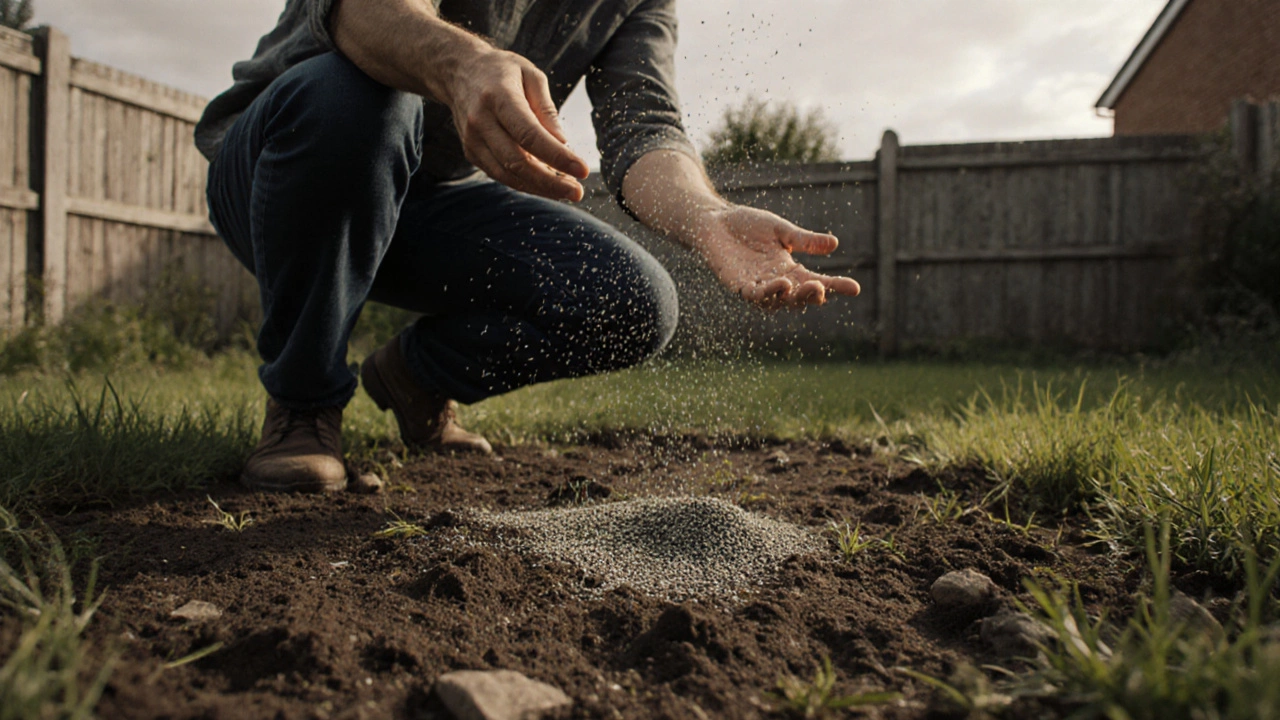Grass Seed Coverage Calculator
Calculate Your Seed Requirements
Choose your lawn area and seed type to determine the proper amount of seed needed for healthy germination.
Seed Required
Quick Takeaways
- Simply scattering grass seed on bare dirt rarely produces a uniform, weed‑free lawn.
- Proper soil preparation-loosen, amend, and level-is the foundation for good germination.
- Use a seed‑to‑soil contact method such as a seed drill, roller, or light raking.
- Keep the seed moist with light watering for the first 2‑3 weeks, then gradually reduce frequency.
- Overseeding an existing lawn can fill gaps, but it still needs soil work and proper seed rates.
What Is grass seed?
Grass seed is a collection of tiny kernels harvested from mature grasses, each containing an embryo capable of growing into a new grass plant. It comes in blends (e.g., cool‑season ryegrass + fescue) or single‑species varieties. Key attributes include:
- Germination rate: typically 85‑95% under optimal conditions.
- Sowing depth: ¼-½inch (6-12mm) for most lawns.
- Ideal temperature: 50‑65°F (10‑18°C) for cool‑season grasses.
Knowing these basics helps you decide how much seed you need and the best time to plant.
Understanding the Soil You’re Working With
When you look at a patch of soil - the natural mineral and organic material that supports plant life - its texture, structure, and nutrient content dictate seed success. Bare dirt often lacks the organic matter and loose structure seedlings need.
Two common soil layers matter:
- Topsoil - the uppermost, nutrient‑rich layer ideal for seed placement.
- Subsoil - denser, lower in nutrients, and harder for roots to penetrate.
If you simply dump seed onto compacted subsoil, the seed may never reach the moisture it needs.

Preparing the Ground: Steps That Matter
- Clear debris - rocks, sticks, old thatch - to create a clean surface.
- Loosen the top few inches with a garden fork or rototiller. Aim for a crumbly texture that holds moisture but drains excess water.
- Test the pH - most lawn grasses prefer a range of 6.0‑7.0. Adjust with lime (to raise) or sulfur (to lower) as needed.
- Incorporate organic amendments. Mix in a thin layer (1‑2inches) of compost - partially decomposed plant material that improves structure and adds nutrients.
- Level the area with a garden rake, creating a gentle slope away from foundations for proper runoff.
These steps provide a stable seed bed, increasing the odds that your seed will make solid contact with soil.
Seeding Methods: Why “Throw‑and‑Hope” Falls Short
Broadcasting seed by hand (the "throw" method) can work on perfectly prepared, flat soil, but most home lawns have uneven spots, weeds, or compacted patches. Here are three proven alternatives:
| Method | Pros | Cons | Best For |
|---|---|---|---|
| Broadcast (hand‑scatter) | Quick, low‑cost | Uneven coverage, high weed risk | Small, already levelled areas |
| Seed drill - a device that opens a narrow furrow, drops seed, and covers it. | Precise depth, uniform distribution | Requires equipment, higher cost | Medium‑to‑large lawns, DIY enthusiasts |
| Lawn roller - a heavy cylinder rolled over seeded areas to press seed into soil. | Improves seed‑to‑soil contact | May compact soil if overused | After broadcasting or overseeding |
Even if you prefer the simplicity of hand‑broadcasting, follow it with a light raking or rolling to embed the seed.
After‑Planting Care: Water, Feed, and Protect
The period from sowing to the first true leaf is critical. Follow these steps:
- Moisture management: Mist the surface lightly several times a day until germination, then switch to a gentle, deep watering schedule (about ¼inch per day). Avoid puddles.
- Fertilization: Apply a starter fertilizer containing a higher phosphorus ratio (e.g., 10‑20‑10) once the seedlings have 2‑3 true leaves. This supports root development.
- Weed control: Hand‑pull any weeds that break through. Chemical herbicides can damage the tender seedlings if applied too early.
- Foot traffic: Keep off the new lawn for at least 3‑4 weeks to prevent compaction.
For a smoother transition, consider a light top‑dressing of sand - fine, washed sand that improves drainage and seed contact.

Overseeding an Existing Lawn: When and How
Sometimes you’re not starting from scratch but need to fill in thin spots. Overseeding - spreading seed over an existing lawn - works best after a thorough rake‑out of thatch and a light top‑dressing. Follow the same soil‑prep and watering rules, but use a higher seed rate (about 10‑12lb per 1,000sqft) to ensure good coverage.
Choosing the Right Seed Mix for Your Climate
Britain’s climate favors cool‑season grasses. A typical blend might include:
- Perennial ryegrass - quick germination, good wear tolerance.
- Festuca (fescue) - drought‑resistant, creates a fine texture.
- Kentucky bluegrass - forms a dense carpet, but slower to establish.
Select a mix based on sun exposure, soil type, and intended use (sports vs ornamental).
Common Mistakes and How to Avoid Them
- Skipping soil prep: Leads to poor germination and weed invasion.
- Planting too deep: Seed buried beyond ½inch can dry out before breaking through.
- Over‑watering or under‑watering: Either drowns seed or causes it to crust over.
- Choosing the wrong time of year: Late summer to early autumn (Sept‑Oct) is ideal in the UK; spring works but risk of heat stress later.
- Neglecting post‑germination care: Without fertilization, seedlings become thin and prone to disease.
Frequently Asked Questions
Can I sow grass seed on a compacted clay soil?
No. Compact clay blocks water and oxygen. Loosen it with a fork or tiller, add sand and compost, then level before seeding.
How long does it take for grass seed to germinate?
Cool‑season grasses typically sprout in 7‑21days if kept consistently moist and at the right temperature.
Do I need a lawn roller after broadcasting seed?
A light roll helps press seed into soil and improves contact, but avoid heavy rolling that compacts the seed bed.
What’s the best time of year to seed in the UK?
Late summer (late August to early October) gives cool temperatures and autumn rains, ideal for establishment before winter.
Can I mix different grass seed varieties?
Yes. Blends combine fast‑germinating ryegrass with drought‑tolerant fescues, giving a lawn that establishes quickly and stays resilient.
